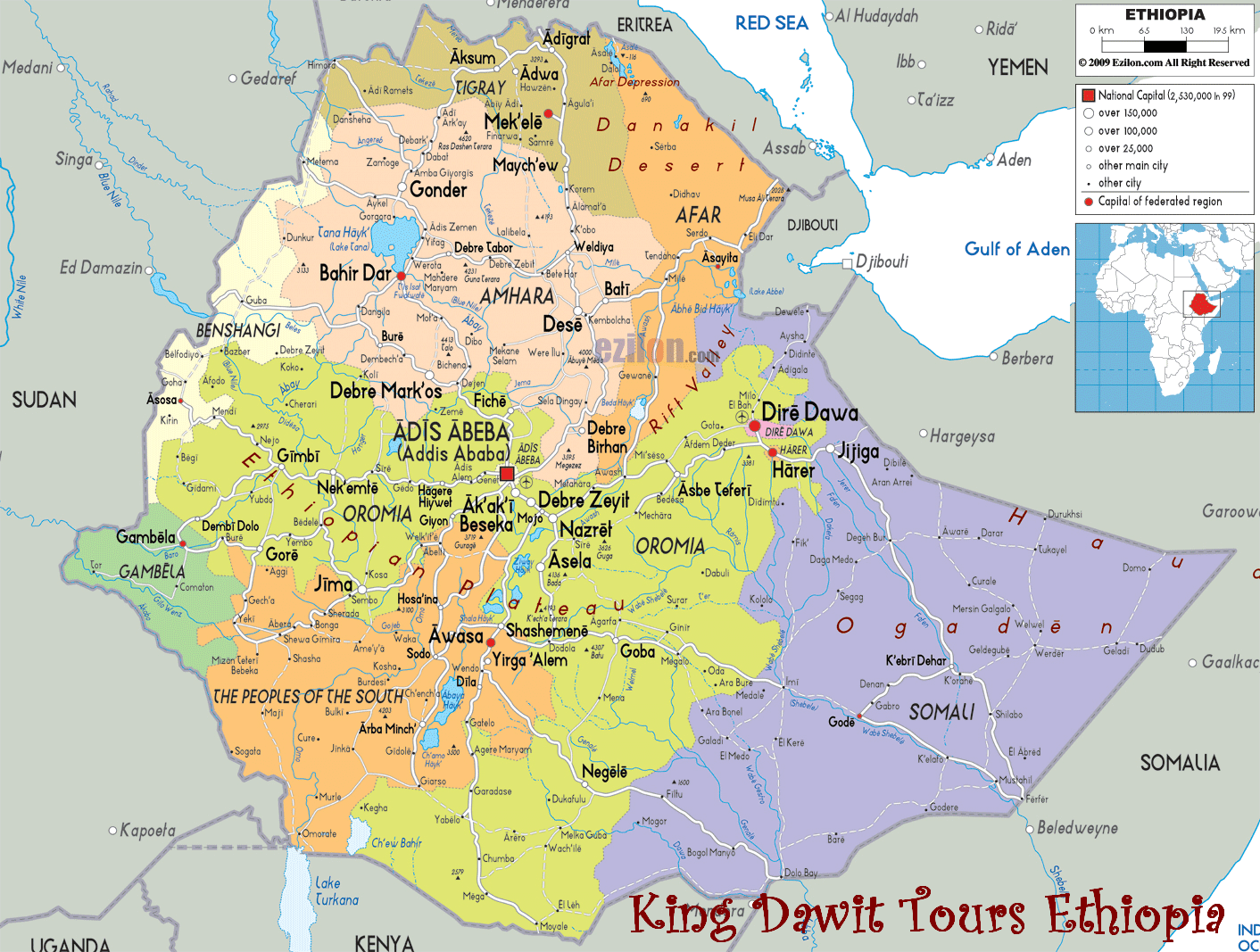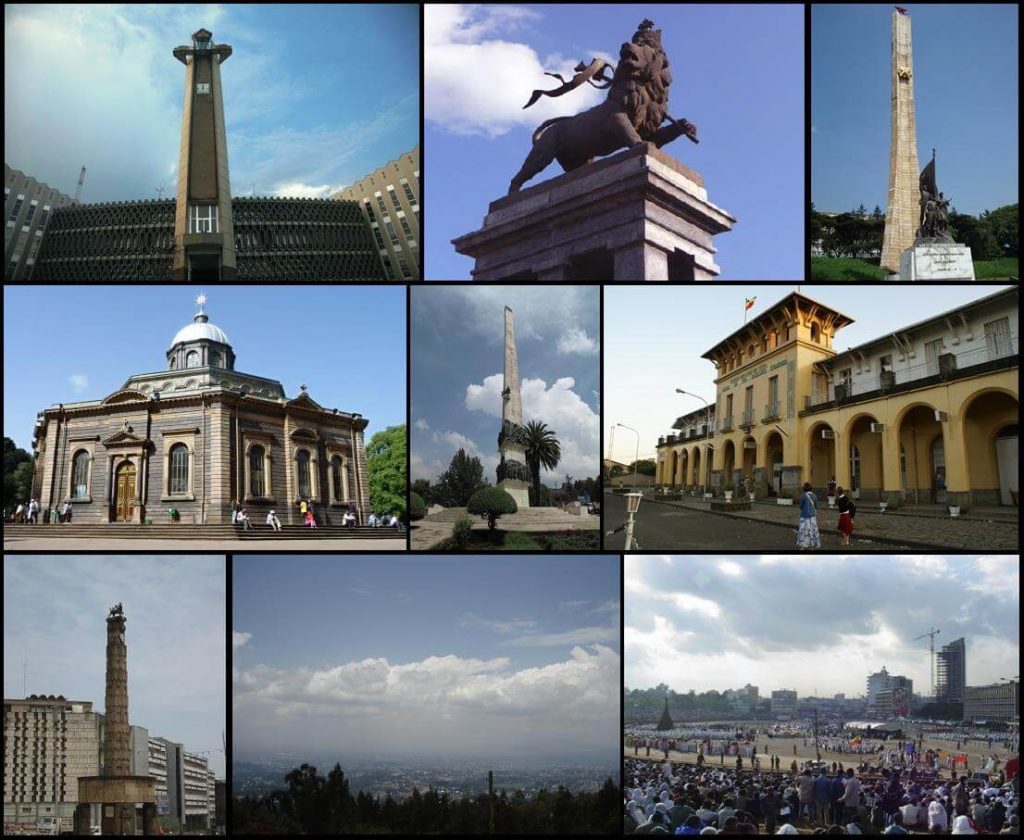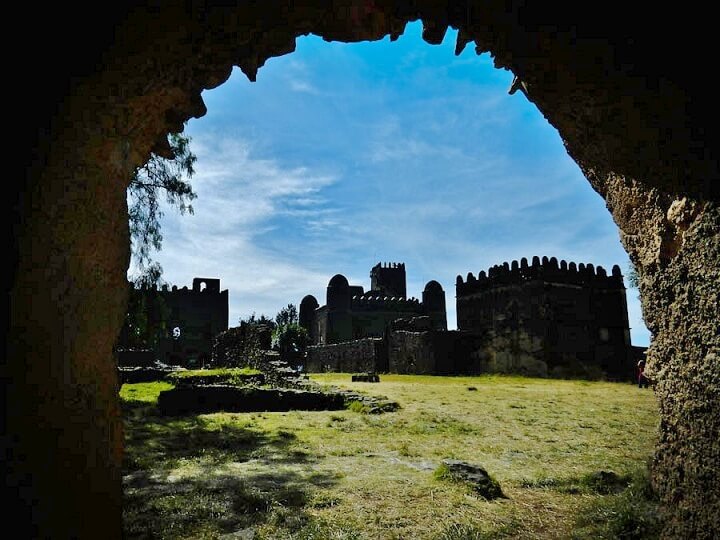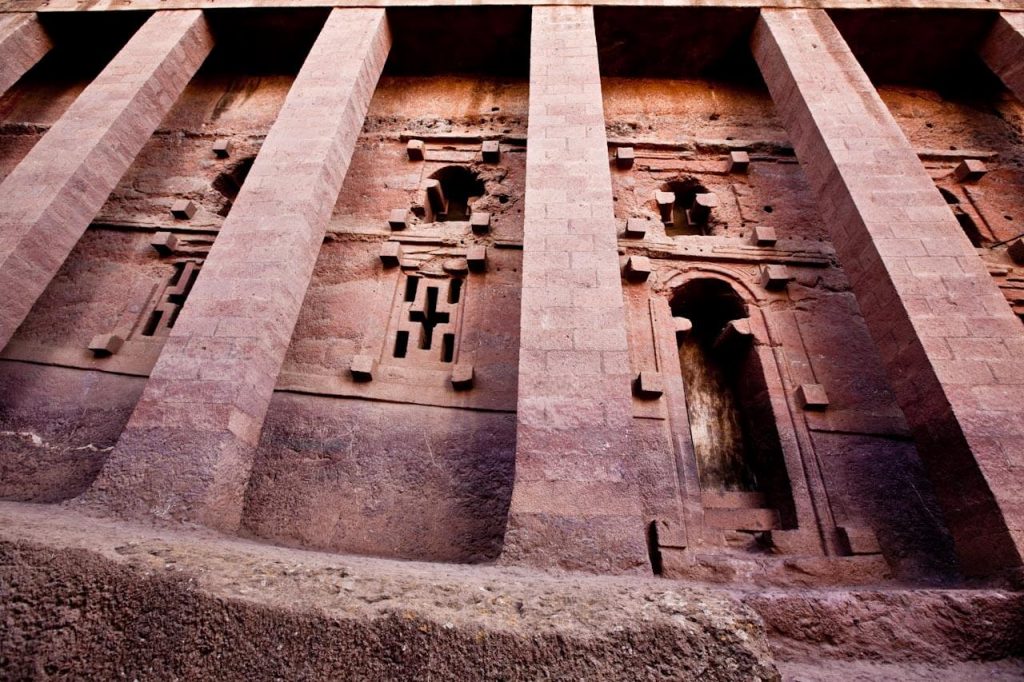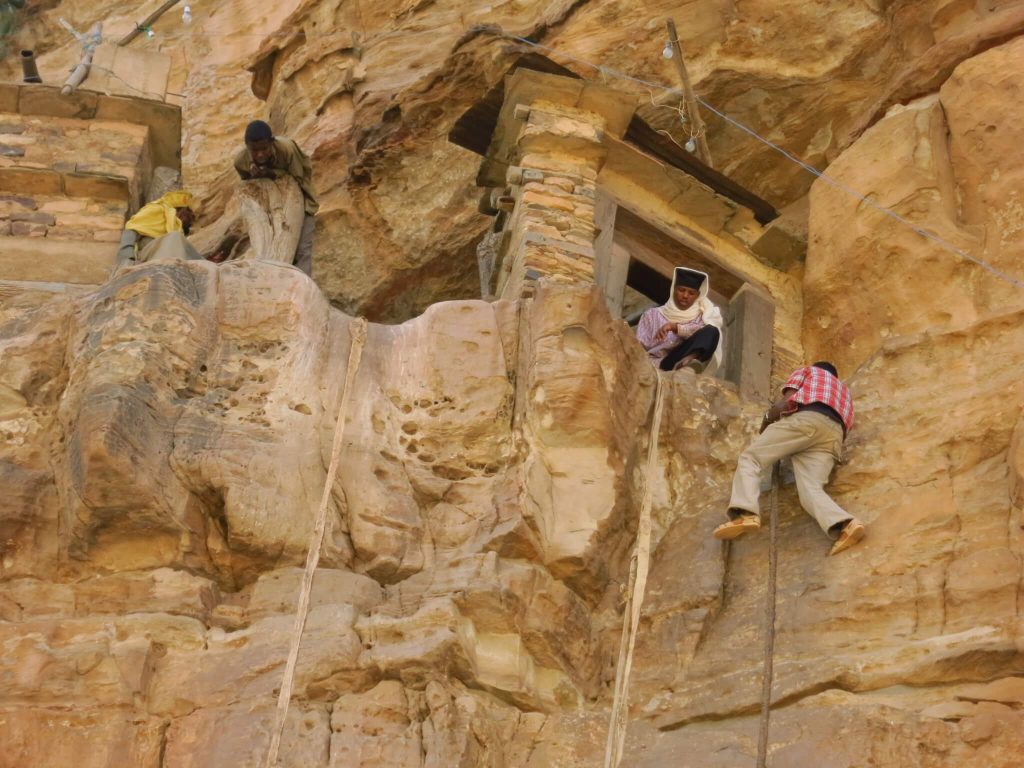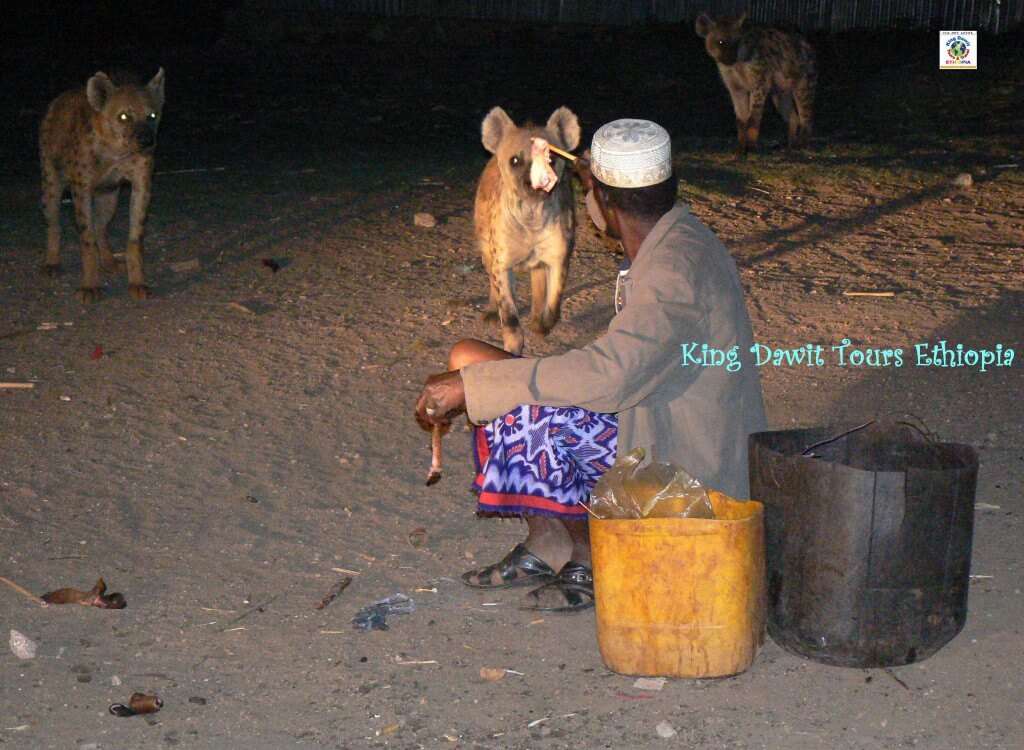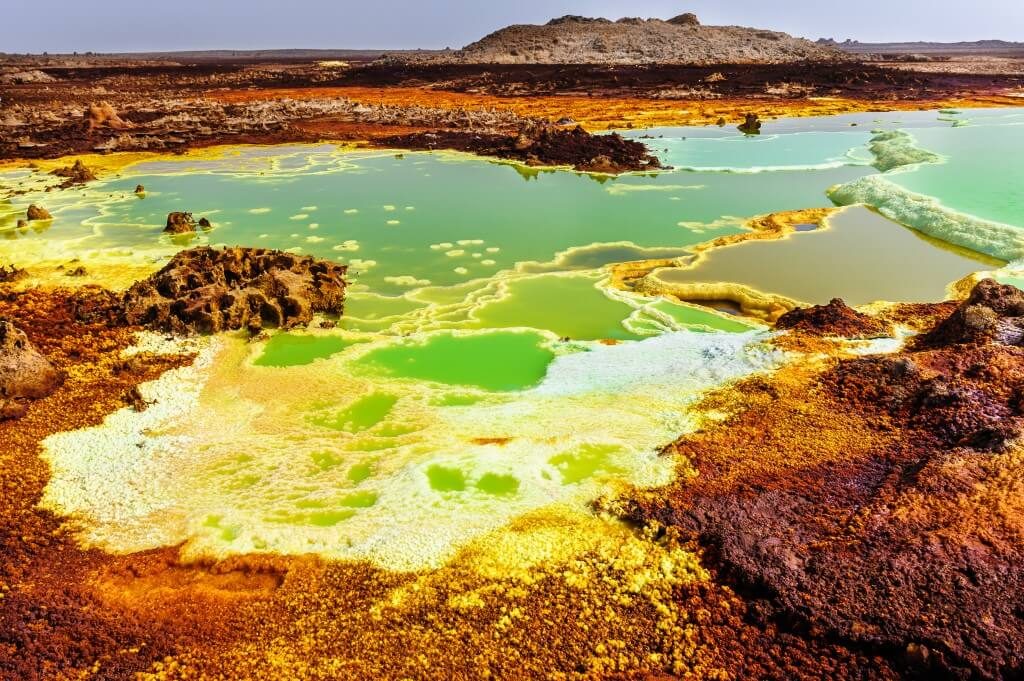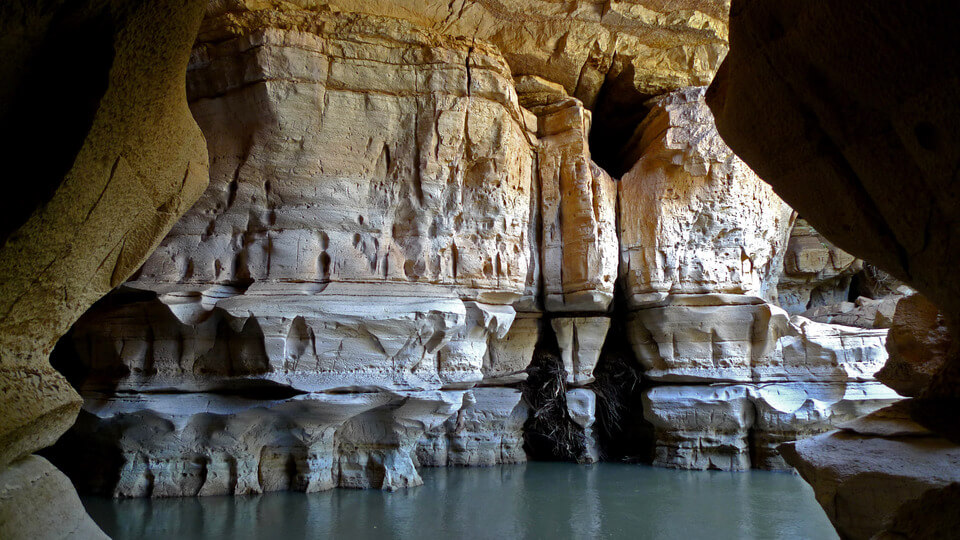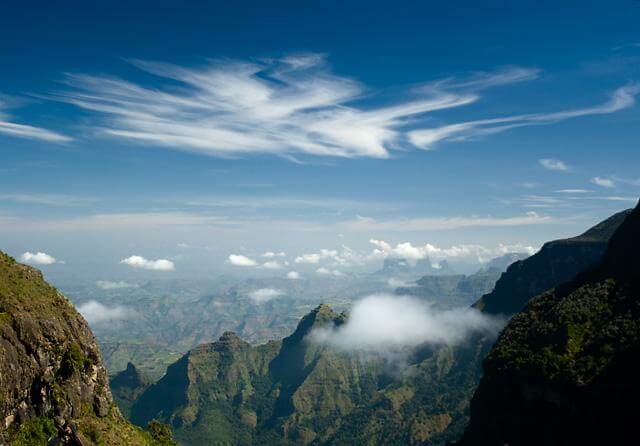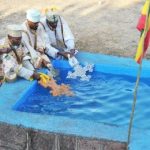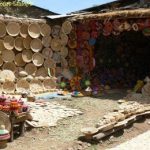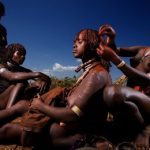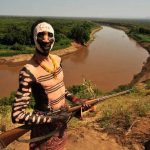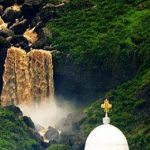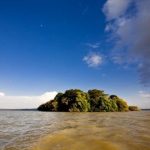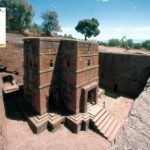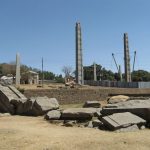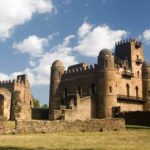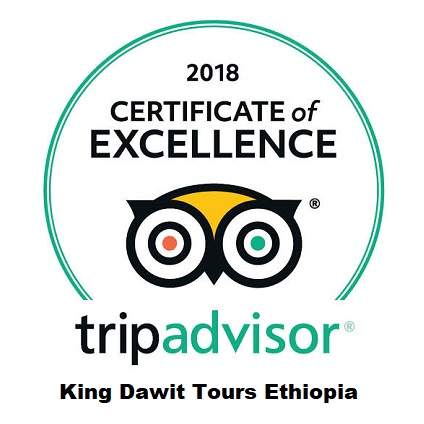About Ethiopia “Land of Origins”
Ethiopia recommended by Rough Guide as the #1 country to visit 2014
ETHIOPIA IS ELECTED AS WORLD BEST TOURIST DESTINATION FOR 2015
ETHIOPIA IS ELECTED AS WORLD BEST TOURIST DESTINATION FOR 2015
Ethiopia, previously named as Abyssinia. An Extensive historic sites, wonders and splendors, stunning landscapes and fascinating attractions will surprise any visitor from across the world.
It is a unique country that has much to offer to please any taste, history, culture, wildlife, nature and so on. It is a land of great antiquity, with a culture and traditions stretching back more than 3,000 Years.
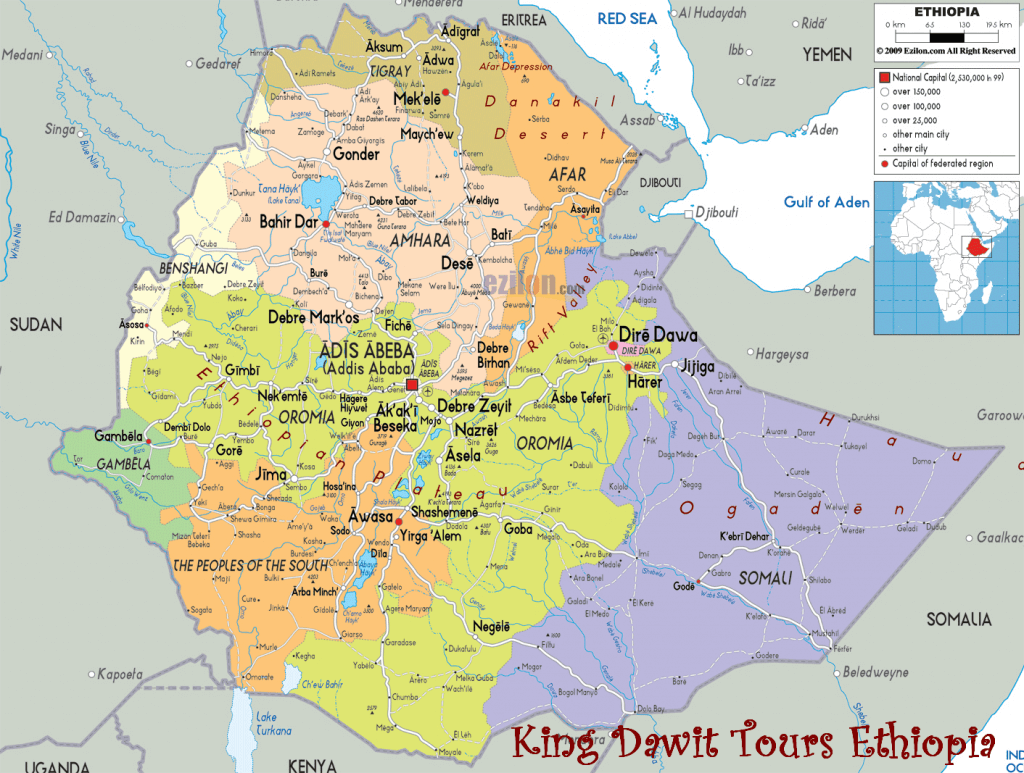 Ethiopia also presents one of the most stunning natural environments in Africa. Because of the size of the country, and the great variety of its landscapes and climate, Ethiopia represents all that Africa has to offer.
Ethiopia also presents one of the most stunning natural environments in Africa. Because of the size of the country, and the great variety of its landscapes and climate, Ethiopia represents all that Africa has to offer.
ABOUT ETHIOPIA GEOGRAPHY OF ETHIOPIA
Ethiopia lies in between the Equator and the Tropic of Capricorn with a rainy season lasting from May to September; Ethiopia is a green country for most of the year. It is a large country (1.251.000 km2), with diverse and extreme natural surroundings. The main part of the country is an immense table land, where you can find mountain massifs reaching 4533m, and where rains and big rivers such as the Blue Nile, Tekeze, Omo and Awash have carved out small and deep canyons.
HISTORY OF ETHIOPIA
The history of this country begins with a legend. The legend tells of the mythical Queen of Sheba, of King Solomon of Jerusalem and their son Menelik I. Ethiopia was known from the dawn of civilization.
The ancient Egyptians already knew that their sacred river originated from a lake on a plateau in the country of Punt, “Land of Gods” in their language, and they knew of a garden existing beyond the desert.
Ethiopia has a 3000 year-old history. Historical documents proved that the Axumite Empire dates back to 300 A.D. From its capital city in the north-eastern part of the country, not far from the Red Sea, it controlled a vast territory that included part of the present Yemen. The empire had a high level of civilization, a written language, Ge’ez, and its own coins which were employed in trade.
People of Ethiopia
Ethiopia had 87 different ethnic groups live together; socially organized on a federal basis. The three most numerous ethnic groups that have had a preponderant role in the national history are the Amhara, the Tigray and the Oromo. Among these, the Amhara were in power until a few years ago and their language, Amharic, is the official national language of Ethiopia. In the present government all three ethnic groups are represented.
The Other ethnic groups are the Guraghe and Sidamo, dwelling in the western and southwestern territories respectively.Toward the borders with Eritrea and Djibouti, in a half independent position, amongst the deserts of Danakil lives the Afar, a half nomadic people which has almost entirely converted to Islam.
Along the banks of Omo River there are several animistic peoples: the Nyangatom, the Karo, the Dasenech, the Bodi, the Mursi, the Surma, the Erbore, and the colorful Hamer tribes .
Some of the most colorful tribes of the Southern Omo valley:-
Mursi
The Mursi peoples live between their dry and wet season range on tame plains, north of Mago National Park in the Omo river region of south-western Ethiopia. They care for livestock and plant some crops. 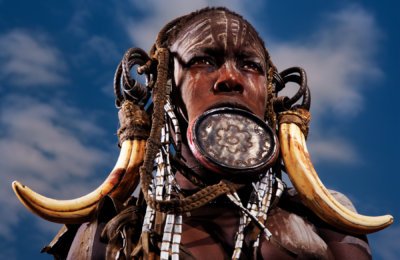
The men practice light scarification on their shoulder after killing an enemy, and shave geometric patterns on their head. During dances and ceremonies they adorn literally every part of their body with white chalk paint. Young unmarried men practice group stick fights.
Hamer
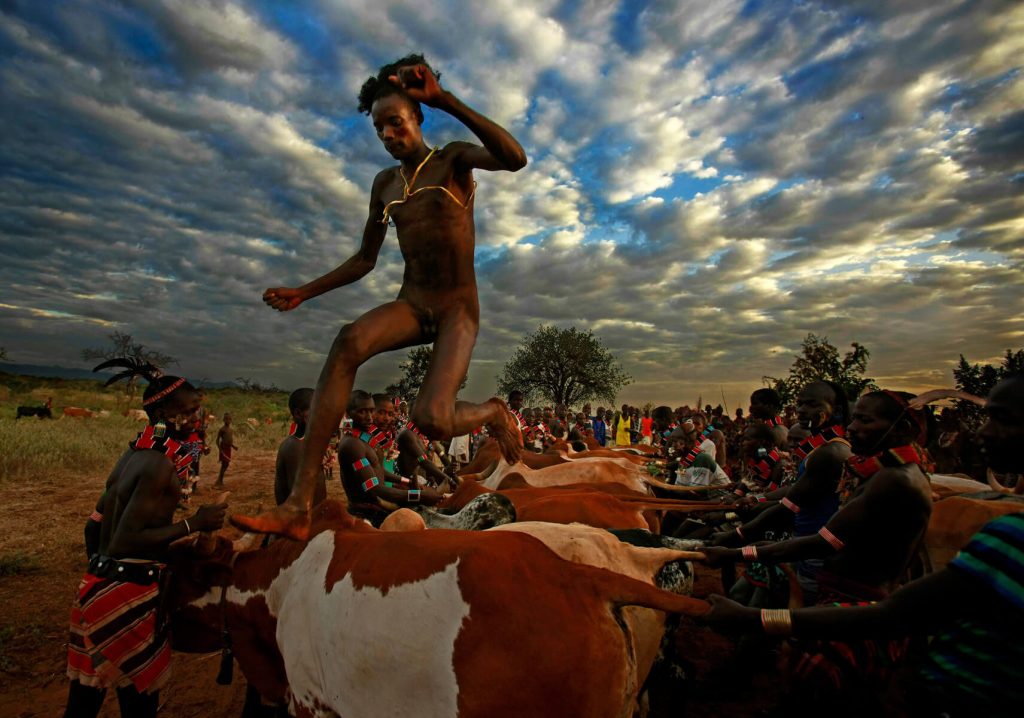
The Hamers are pastoralists and their populations about 30,000.They are known for their practice of body adornment and wearing a multitude of colorful beads. Women adorn their necks with heavy polished iron jewelry. Hamer society consists of a complex system of age group. To pass from one age group to another involves complicated rituals .The most significant ceremony for young men is the “jumping of the bull”-the final test before passing in to adulthood.
The ceremony lasts three days .Late in the afternoon on the final day; ten to thirty bulls are lined up side by side. The naked initiate rushes towards the animal, vaults on to the first bull’s back and runs across the line of animals .At the end of the line ,he turns back to repeat the performance .
The Karo People
Which counts about more than 3000 peoples, mainly live on the practice of flood retreat cultivation on the banks of Omo River in South- Western Ethiopia.
The karo excel in face and body painting, practiced in preparation of their dances and ceremonies. They decorate their bodies, often imitating the spotted plumage of a Guinea Fowl. Feather plumes are inserted in their clay hair buns to complete the look. The clay hair bun can take up to three days to construct and is usually re-made every three to six months. Their painted face masks are spectacular.
Ethiopia Tourist Sites and Attractions:-
Addis Ababa (African Diplomatic City)
Addis Ababa Among the 10 world capital cities need to be visted in your entire life due her stages of transformation ; recommended by lonely planet travel guide (on 2012).
The name of the city, in Amharic, means “new flower”. Founded in 1886 by Menelik II, it is located at 2,500 metres above sea level in one of the highest parts of the Entoto mountain chain (3,000m above sea level). It enjoys an excellent climate all year round, with an average temperature of 250C.
Gondar (African Camelot)
Gondar offers fairy-tale castles dating back to the 17th-century that seem to belong in an Arthurian Romance. Gondar was founded by the emperor Fasiladas in 1636 and was the capital of the country for the next two centuries. The city contains a dozen of castles built by various emperors over the course of 236 years.
Axum
Axum was founded by the brothers Abreha and Atsbeha; it is not until midway through the fourth century that we have records of the first historical king, Ezana. The African’s nation historic route begins in the ancient city of Axum, dates back to 100 B.C.
Axum is also the site of the church of Hidar Tsion Mariam (16th century), in front of which kings were crowned even as late as the last century. Inside, there are displays of golden crowns and crosses, the latter of which are still used during the major festivals of the Coptic Church.
Bahir Dar
Bahir Dar is a well master planned city, its avenues lined with palm trees and plants. It is located on the south bank of Lake Tana. Lake Tana is the largest lake in Ethiopia. Just 30km from the city are the water falls of the Blue Nile water fall or “Tis Abay” (smoking water).
YEHA
The six century BC, Ethiopia’s historic route begin with a glance at the tantalizing remains of yeha the country’s earliest high civilization. In the remote part of Tigray region, Yeha rests several hours drive from the more accessible city of Axum. The journey takes you on rough tracks through dramatics high land scenery and eventually ends in a beautiful and serene agricultural. It is there, close to a much more recent Christian church, that you may see the towering ruins of Yeha’s temple of the moon-built more than 2500 years ago, in Sabean times.
The temple is an imposing rectangular edifice, though it has been long since it’s lost its roof and upper storey. The ruins stand some twelve meters in height.
Lalibela (African Petra)
Located in the north-east of Ethiopia, Lalibela is another renowned historical destination. Placed third in historic sequence, its site hosts the “Eighth wonder of the world”, the Lalibela rock-hewn churches. UNESCO has recorded this site as one of the world wonders. It is also holy land for Ethiopia’s Orthodox Christians.
The city was constructed by king Lalibela of the Zagwe dynasty around the time of the fall of the Axum Empire in the 13th century. It was built in order to become the “New Ethiopian Jerusalem / second Jerusalem” and is characterized by its eleven churches carved out of the pink granite rock of the mountain.
TIGRAI, DEBRE DAMO AND THE ROCK HEWN CHURCHES
The monastery of Debre Damo is located 86 km to the north-east of Axum on the peak of Debre Damo at a height of 2,800 m above sea level and is one of the most important holy places of Ethiopia.
Local legend has it that the monastery was founded by Abuna Aregawi, one of the nine saints, with the aid of a serpent. There are still some 80 monks living there and access to the monastery itself is gained by climbing up with the help of a rope (only men are permitted to enter).
DIRE DAWA AND HARAR
Dire Dawa which is part of the railway line stretching from Addis Ababa to Djibouti, it was built at the beginning of the 20th century with the co-operation of the French government. The market in Kefira is very interesting, providing an opportunity to mingle with peoples of the region: the Afar, Somali and Oromo.
Located 50km from Dire Dawa and at a height of 1,870m above sea level is the city of Harar. Founded in 1500, the city was once a Muslim fortress and one of the most dynamic markets in east Africa.
DANAKIL DEPRESSION
Danakil is the lowest part of Ethiopia at 116 m below sea level; it stretches between the Red Sea and the foothills of the eastern slopes of the Ethiopian plateau.
The area contains marvelous examples of volcanoes, although currently only minimally active. The rock surfaces are colored in spectacular hues due to the emissions of various chlorides from geysers. There are 30 salt lakes in the north of the region, which are home to an enormous variety of birds.
The whole region is inhabited by the Afar people, proud nomadic shepherds. They carry salt in their camel caravans up to the Ethiopian highlands.
SOF OMAR CAVE
It is the largest cave in Africa. The area of the cave is typically characterized by flat topography and deep gorges cut by the river Web which forms the cave. The beauty of the cave consists in the untouched and wild aspects of the huge main passages, the shape of the galleries and the white color of the lime stone basalt forming the walls.
NATIONAL PARKS :-
THE SIMIEN MOUNTAIN NATIONAL PARK
‘Simien’ means ‘North’ in Amharic. Six hundred million years ago, the mountains were an enormous volcanic mass; rain and ice have carved deep fissures into them and rivers have continued the work of erosion, creating an incredible landscape: peaks and deep gorges. In the steep slopes may be seen the Walia Ibex of the Simien Mountains.
BALE MASSIF NATIONAL PARK
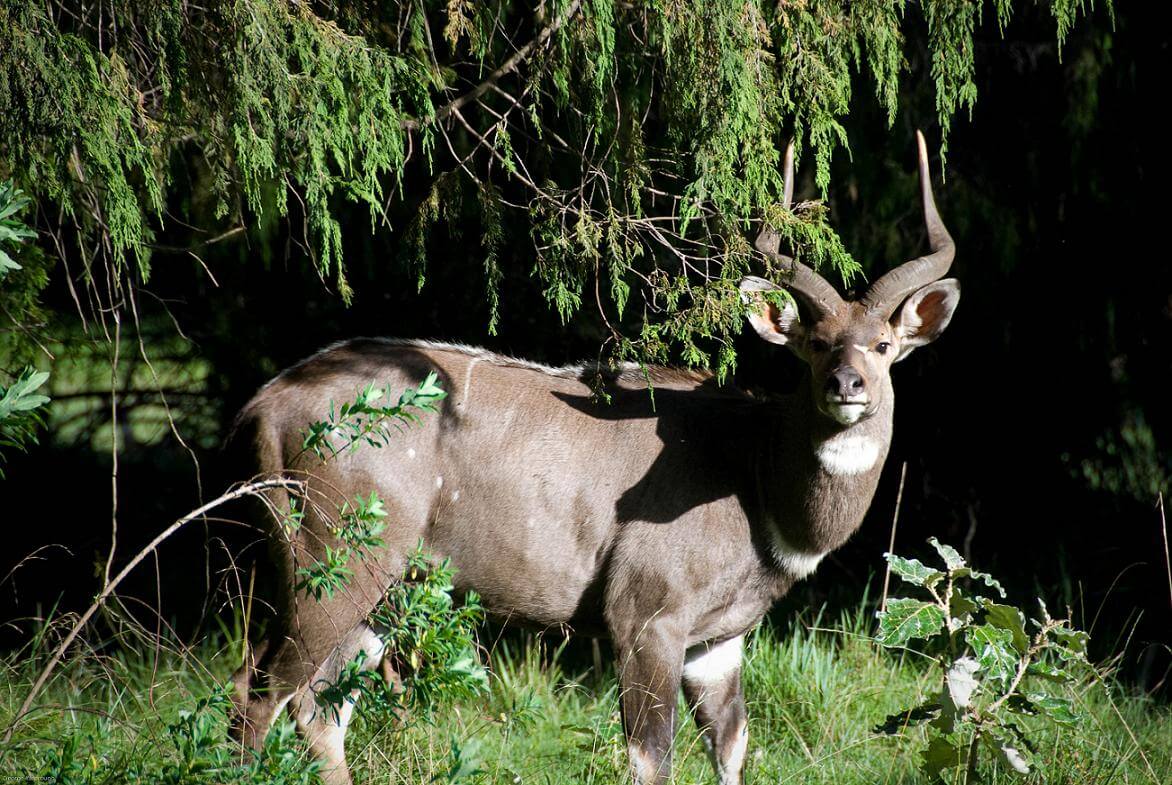 This park is home to the endemic mammal species of the mountain Nyala, Ethiopian Wolf (Simien Fox), Menilik’s Bushbuck, Lion, Bhor Reedbuck, Greater and Lesser kudu, Leopard, Warthog…In the South-East of the country is Bale Park, which extends over the massif of the same name. The mountain reaches a peak of 4,377 m above sea level and the second highest mountain in Ethiopia.
This park is home to the endemic mammal species of the mountain Nyala, Ethiopian Wolf (Simien Fox), Menilik’s Bushbuck, Lion, Bhor Reedbuck, Greater and Lesser kudu, Leopard, Warthog…In the South-East of the country is Bale Park, which extends over the massif of the same name. The mountain reaches a peak of 4,377 m above sea level and the second highest mountain in Ethiopia.
………..And many more about Ethiopia with their own unique fauna and floras .
